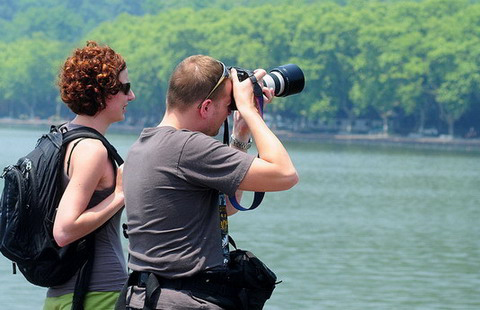Comfort women: A final solution
By Yu Bin (Chinadaily.com.cn) Updated: 2014-09-24 10:06Notes:
1. See Stephanie Nebehay, "U.N. panel tells Japan to compensate 'comfort women'", Reuters, July 24, 2014; Christine Ahn, Seeking truth for 'comfort women, Asia Times Online, June 26, 2014; "Congressman Mike Honda Asks State Department to Act on 'Comfort Women' Issue, Letter asks for immediate attention, meeting with Department", Press Release February 4, 2014; Sex slavery an 'indescribable' wrong: Murayama, The Japan Times, February 12, 2014, ; In September 2013, Taiwan released a documentary titled Song of the Reed about six former comfort women in Taiwan, "Documentary on Taiwan's 'comfort women' premieres".
2. In March 2014, the Abe government said that it would water down the Kono Statement "if new findings emerge". In a meeting by the UN Human Rights Committee on 15 - 17 July 2014, the Japanese delegation continued to deny its responsibilities for the comfort women issue by insisting that the issue was resolved and those women were not sex slaves. See "Roundup: Japan questioned on 'comfort women' in Human Rights Committee", Xinhua, July 17, 2014.
3. "Sex slaves put Japan on trial", BBC, December 8, 2000.
4. George Hicks, The Comfort Women: Japan's Brutal Regime of Enforced Prostitution in the Second World War, (W.W. Norton & Company, 1994), p. 16; "Secrets of the First Japanese Comfort Stations in the World", People's Daily Online, June 16, 2005.
5. "A Debt of Blood: An Eyewitness Account of the Barbarous Acts of the Japanese Invaders in Nanjing", February 7, 1938, Dagong Daily, Wuhan edition.
6. "US archives reveal war massacre of 500,000 Chinese by Japanese army", Xinhua, December 12, 2007.
7. Chinese scholar Su Zhiliang, for example, argued that there were at least 400,000 comfort women during the 14 years of Japanese war in Asia (1931-45), including many Chinese women. See Luan Fan, "'Comfort Stations' in More Than a Dozen Countries Brutalizing Hundreds of Thousands of 'Comfort Women'", Global Times, June 17, 2005, p 23.
8. For example, a decrypted message sent by the Japanese Chief of Staff of the 1st Southern Expeditionary Fleet on 18 August 1945 (three days after the surrender) reads: "on 1st August the personnel employed in connection with Japanese naval comforts at Singapore were appointed civilian employees of 101st hospital. Most of the girls were made auxiliary nurses. Other commands under 1st Southern Expeditionary Fleet are to conform". On 20 August, 1945, the Japanese Civil Administration Department from Makassar, Indonesia, ordered that comfort women were to be attached to local hospitals as nurses and "when this message is understood, burn it". Hicks, op cit, p 8.
9. Various evidences indicate a wide distribution between 29:1 and 100:1. See Hicks, op cit, p 19.
10. Digital Museum: The Comfort Women Issue and the Asian Women's Fund.
11. Reports of General MacArthur: MacArthur in Japan: The Occupation: Military Phase, Volume I Supplement (Washington DC: 1994 edition), p 117.
12. See "Doolittle Raid".
13. Thomas Schelling, The Strategy of Conflict (Harvard University Press, 1960), p 16.
14. Digital Museum: The Comfort Women Issue and the Asian Women's Fund.
15. Hicks, op cit, pp 28, 32-33.
16. Hicks, op cit, pp 45-46.
17. John Magee.
18. John Rabe, The Good Man of Nanking: The Diaries of John Rabe (Vintage, 2000).
19. Chen, World War II database, cited from "Prince Asaka appointed as commander".
20. Iris Chang, The Rape of Nanking (Penguin, 1997), pp 51-52.
21. Reiji Yoshida, State mum on Nakasone's war brothel, The Japan Times, March 17, 2007.
22. Jeff Kingston, Pan-Asian dreams: The Greater East Asia Conference, The Japan Times, November 9, 2013.
23. Yuka Hayashi, As Tensions Rise, Pacifist Japan Marches Into a Military Revival, The Wall Street Journal, July 18, 2013.
24. Ruth Benedict, The Chrysanthemum and the Sword (1946), pp. 2-3.
Speaking Freely is an Asia Times Online feature that allows guest writers to have their say. Please click here if you are interested in contributing. Articles submitted for this section allow our readers to express their opinions and do not necessarily meet the same editorial standards of Asia Times Online's regular contributors.











